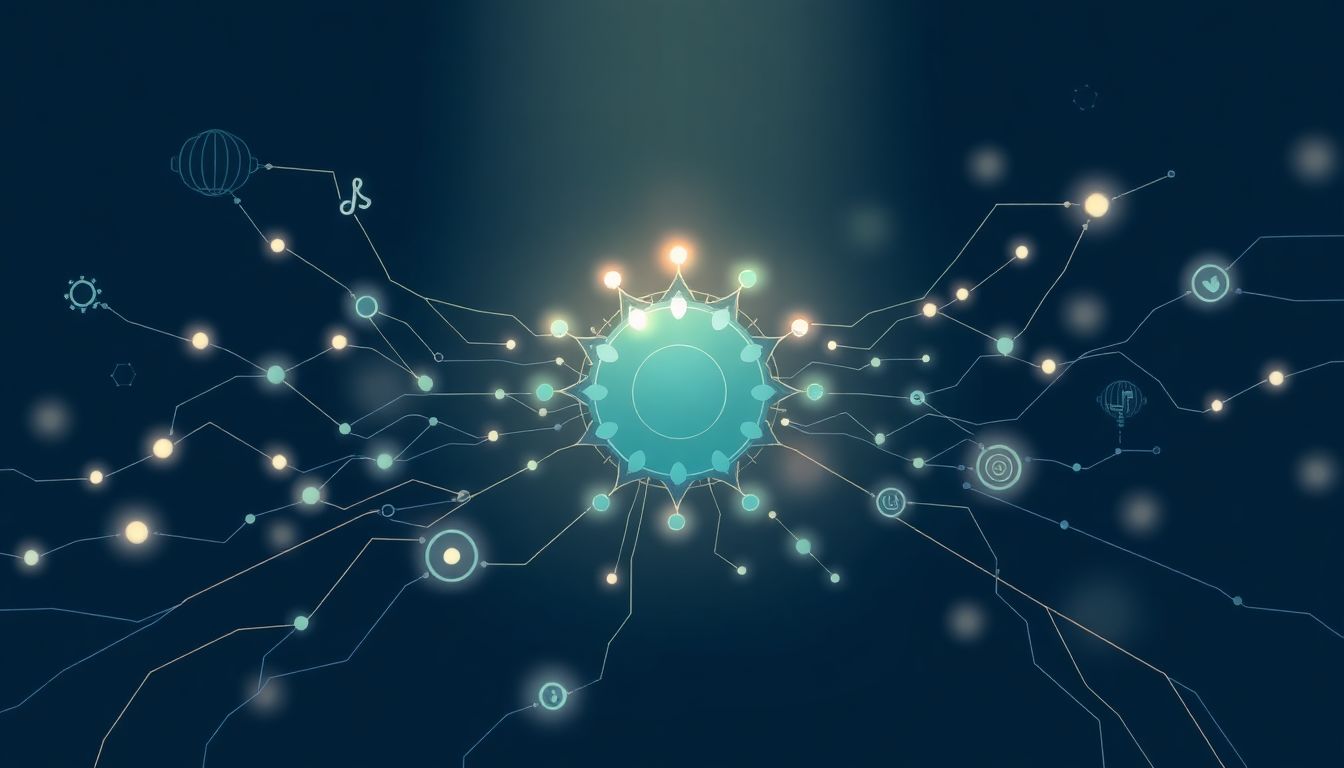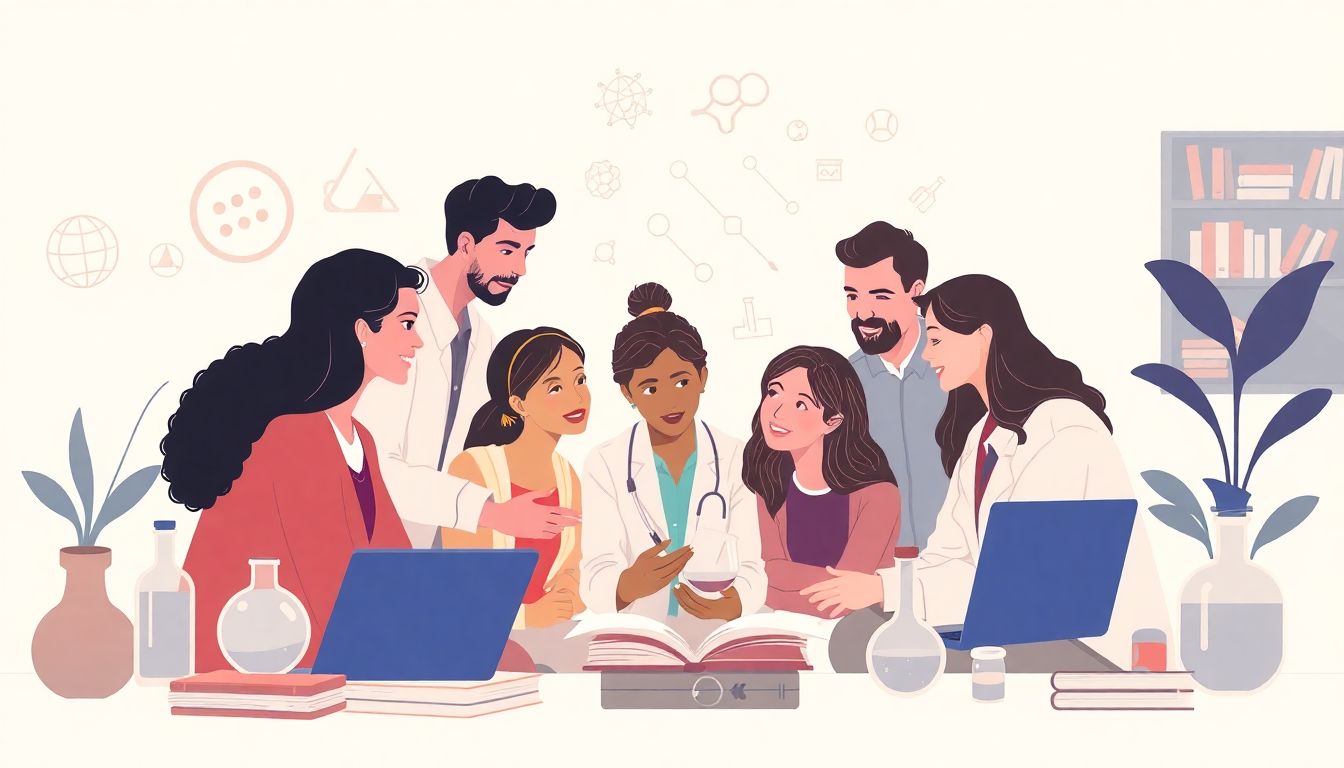Interdisciplinary projects can feel like trying to build a bridge with mismatched parts. It’s a common hurdle many face, especially when blending different fields. Finding common ground among diverse subjects can be tricky, leaving you wondering where to start or how to communicate effectively.
But don’t worry! If you stick around, I’ve got some great ideas and prompts that can help you harness the power of ChatGPT to bring those distinct threads together seamlessly.
We’ll dive into examples, tips for crafting effective prompts, and even explore real success stories. You’ll be well on your way to turning your interdisciplinary dreams into reality!
Key Takeaways
- Interdisciplinary projects combine different fields, enhancing creativity and collaboration.
- ChatGPT can generate project ideas, facilitate brainstorming, and improve communication among team members.
- Effective prompts should be specific and context-rich to yield relevant responses.
- Use prompts like “List strategies for effective interdisciplinary communication” to address common challenges.
- ChatGPT can assist with research, summarizing findings, and designing surveys for interdisciplinary topics.
- Exploring diverse perspectives can lead to innovative solutions in projects.

Best ChatGPT Prompts for Interdisciplinary Projects
Using ChatGPT for interdisciplinary projects can significantly enhance collaboration and creativity. Here are some effective prompts that you can use right away:
- “Generate a list of innovative project ideas that combine elements from science and the arts.”
- “Suggest interdisciplinary research questions that involve psychology and environmental science.”
- “Provide a framework for an educational program integrating technology and social studies.”
- “What are some creative ways to approach a project that merges multidisciplinary fields like engineering and literature?”
- “List strategies for effective communication between team members from different academic backgrounds.”
These prompts can help you tap into diverse perspectives and foster collaboration across various fields.
Examples of Interdisciplinary Project Ideas
Interdisciplinary projects can lead to unique solutions by merging different fields of study.
Here are some examples to inspire your next project:
- Develop an art installation that incorporates scientific data visualizations to raise awareness on climate change.
- Create a documentary that combines interviews from experts in history, sociology, and psychology to explore societal changes.
- Design a community garden that integrates principles from biology, urban planning, and education to teach about sustainable practices.
- Initiate a writing project that brings together storytellers and scientists to craft narratives around breakthrough research.
- Implement a health initiative that combines nutrition science with local cultural practices to promote wellness in diverse communities.
These project ideas demonstrate the potential for innovation when various disciplines collaborate.
How to Use ChatGPT for Collaboration in Interdisciplinary Work
Using ChatGPT can streamline collaboration in interdisciplinary projects by facilitating brainstorming and discussions.
Here’s how you can effectively incorporate it into your workflows:
- Utilize ChatGPT for brainstorming sessions, prompting it to generate ideas based on your team’s interests and goals.
- Ask ChatGPT to summarize key points from your discussions to ensure everyone is on the same page.
- Request it to help draft emails or messages when communicating complex ideas with team members from different disciplines.
- Incorporate ChatGPT into your project management tools to track tasks and deadlines collaboratively.
- Use it to simulate discussions by asking for responses representing different viewpoints on a given topic.
Leveraging AI like ChatGPT can significantly enhance communication and productivity in team settings.
Tips for Crafting Effective ChatGPT Prompts for Interdisciplinary Topics
Crafting effective prompts is essential for maximizing the benefits of ChatGPT in interdisciplinary projects.
Here are some tips to help you formulate impactful prompts:
- Be specific in your requests. Instead of asking for general ideas, specify the fields you want to combine.
- State the desired outcome clearly. For example, “What are five ways to integrate art and technology in education?”
- Use context in your prompts. Providing background information can help ChatGPT generate relevant responses.
- Experiment with different phrasing to see what yields the best results. Sometimes, slight changes can lead to different insights.
- Make use of follow-up questions to dig deeper into the initial suggestions provided by ChatGPT.
Applying these tips will help you communicate more effectively with ChatGPT, ensuring you gain valuable insights for your interdisciplinary projects.

Benefits of Using ChatGPT in Interdisciplinary Projects
Using ChatGPT in interdisciplinary projects can offer several advantages that enhance the work process.
First, it serves as a central hub for idea generation, merging different perspectives easily.
Try this prompt: “List five benefits of collaboration in interdisciplinary teams and how ChatGPT can facilitate them.”
Additionally, it helps improve productivity by automating routine tasks.
You can ask: “What are some repetitive tasks in project management that ChatGPT can assist with?”
ChatGPT also provides a platform for members from varied disciplines to ensure clear communication.
Consider using this prompt: “Outline strategies for effective communication among team members from diverse academic backgrounds.”
Finally, AI can foster innovative thinking by presenting unique solutions drawn from multiple disciplines.
To explore this, use: “Generate creative project ideas by integrating concepts from biology and art.”
Common Challenges in Interdisciplinary Projects and ChatGPT Solutions
Interdisciplinary projects often come with unique challenges, but ChatGPT can help tackle many of them.
One common issue is communication barriers between team members from different fields.
Try asking ChatGPT: “What strategies can teams implement to avoid misunderstandings due to jargon?”
Another challenge is maintaining focus on project goals, especially when multiple interests are involved.
For this, prompt ChatGPT: “Create a checklist of key objectives to keep interdisciplinary teams aligned.”
Additionally, conflicts may arise from differing viewpoints or methodologies.
You can resolve this by asking: “How can teams use ChatGPT to mediate conflicts and facilitate constructive dialogue?”
ChatGPT can also assist in brainstorming sessions by simulating discussions representing various disciplines.
Use this prompt: “Simulate a debate between an engineer and an artist on a shared project.”
Enhancing Creativity in Interdisciplinary Work with ChatGPT Prompts
Enhancing creativity is essential for successful interdisciplinary projects, and ChatGPT can be a valuable ally.
Kick off brainstorming sessions with prompts like: “What are ten out-of-the-box solutions for environmental sustainability combining art and science?”
ChatGPT can also facilitate divergent thinking exercises.
Prompt it with: “List unusual pairings of disciplines and potential projects that could arise from them.”
For team reflection, ask: “Summarize creative barriers that interdisciplinary teams face and how to overcome them.”
Additionally, you can use ChatGPT to playfully challenge assumptions during discussions.
Try: “Identify five common misconceptions about interdisciplinary work and explain their origins.”
Lastly, invite unique perspectives by incorporating cultural dimensions into the creative process.
Use this prompt: “Suggest ways to integrate cultural narratives into STEM projects.”
Leveraging ChatGPT for Research in Interdisciplinary Fields
Researching across multiple disciplines can be daunting, but ChatGPT simplifies the process remarkably.
Start by asking: “What are key research areas that connect psychology and environmental science?”
ChatGPT is great for literature reviews too. You can ask it to: “Summarize the latest findings in the integration of technology and education.”
Furthermore, it assists with data gathering by helping formulate effective research questions.
For instance, prompt: “Generate a list of research questions that explore the effects of urban design on community health.”
Additionally, it can help analyze existing data by providing insights or identifying trends.
Try this: “What patterns emerge in studies about the intersection of economics and public health?”
Lastly, ChatGPT can also help design surveys or experiments.
Use the prompt: “Outline a survey to assess the impact of arts education on student engagement.”

User Experiences: Success Stories of Interdisciplinary Projects with ChatGPT
Hearing about real-life success stories can inspire you as you navigate interdisciplinary projects using ChatGPT.
Multiple teams have effectively integrated ChatGPT into their collaborative efforts, leading to impressive results.
For example, a group of educators and tech professionals collaborated to design an interactive learning module.
They used ChatGPT to generate engaging content that bridged science and language arts.
Here’s a prompt you can try: “Share success stories of teams who utilized ChatGPT in their interdisciplinary projects.”
Another instance involved environmentalists partnering with artists to create a community awareness campaign.
ChatGPT helped brainstorm compelling ways to convey their messages visually and textually, enriching the whole initiative.
Consider this prompt: “List ways teams benefited from using ChatGPT during creative interdisciplinary projects.”
These experiences highlight ChatGPT’s role in enhancing creativity and communication across various fields.
Frequently Asked Questions About ChatGPT and Interdisciplinary Projects
FAQ sections can clarify doubts and provide quick insights into using ChatGPT for interdisciplinary projects.
One common question is, “How can ChatGPT improve teamwork in interdisciplinary settings?”
To answer this, ChatGPT assists in bridging communication gaps and enhances idea sharing among team members.
Another frequent inquiry is, “What are some limitations of ChatGPT in complex projects?”
While it can offer valuable assistance, users should be aware that it may not fully grasp the nuances of specialized terminology.
You might ask, “Can ChatGPT generate specific project plans for interdisciplinary areas?”
The answer is yes, ChatGPT can help outline various components of a project based on your input.
Use this prompt: “What should teams consider when collaborating with ChatGPT on complex projects?”
These discussions help demystify the use of AI tools in interdisciplinary work and prepare you for potential challenges.
FAQs
Utilize ChatGPT to generate ideas, facilitate brainstorming sessions, and summarize discussions. Its capabilities in diverse fields allow team members to explore various perspectives and streamline the collaborative process effectively.
ChatGPT enhances creativity, enables quick access to information across disciplines, and helps synthesize complex ideas. It can also promote inclusivity by balancing contributions from team members with varying expertise.
Be specific and clear in your prompts. Include context about the disciplines involved and the desired outcome to ensure that ChatGPT understands the scope and can generate relevant responses effectively.
ChatGPT can assist in resolving communication barriers, information overload, and differing terminologies across disciplines. It aids in clarification, ensures a shared understanding, and synthesizes complex ideas to foster collaboration.
